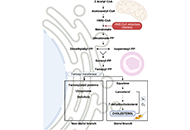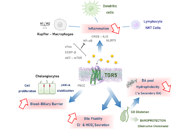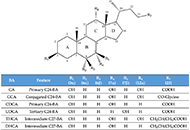3 results in Exploration of Digestive Diseases
Latest
Sort by :
- Latest
- Most Viewed
- Most Downloaded
- Most Cited
Open Access
Perspective
Hypoxia signaling and cholesterol/steroidogenic acute regulatory protein 1 axis: interplay and role in alcohol and non-alcohol-related liver diseases
Sandra Torres ... Carmen Garcia-Ruiz
Published: December 30, 2022 Explor Dig Dis. 2022;1:170–186

Open Access
Review
The bile acid receptor TGR5 and cholestasis
Grégory Merlen ... Thierry Tordjmann
Published: December 30, 2022 Explor Dig Dis. 2022;1:154–169
This article belongs to the special issue CHOLESTASIS

Open Access
Review
Cholestasis associated to inborn errors in bile acid synthesis
Ricardo Espinosa-Escudero ... Maria J. Monte
Published: December 7, 2022 Explor Dig Dis. 2022;1:137–153
This article belongs to the special issue CHOLESTASIS

Journal Information